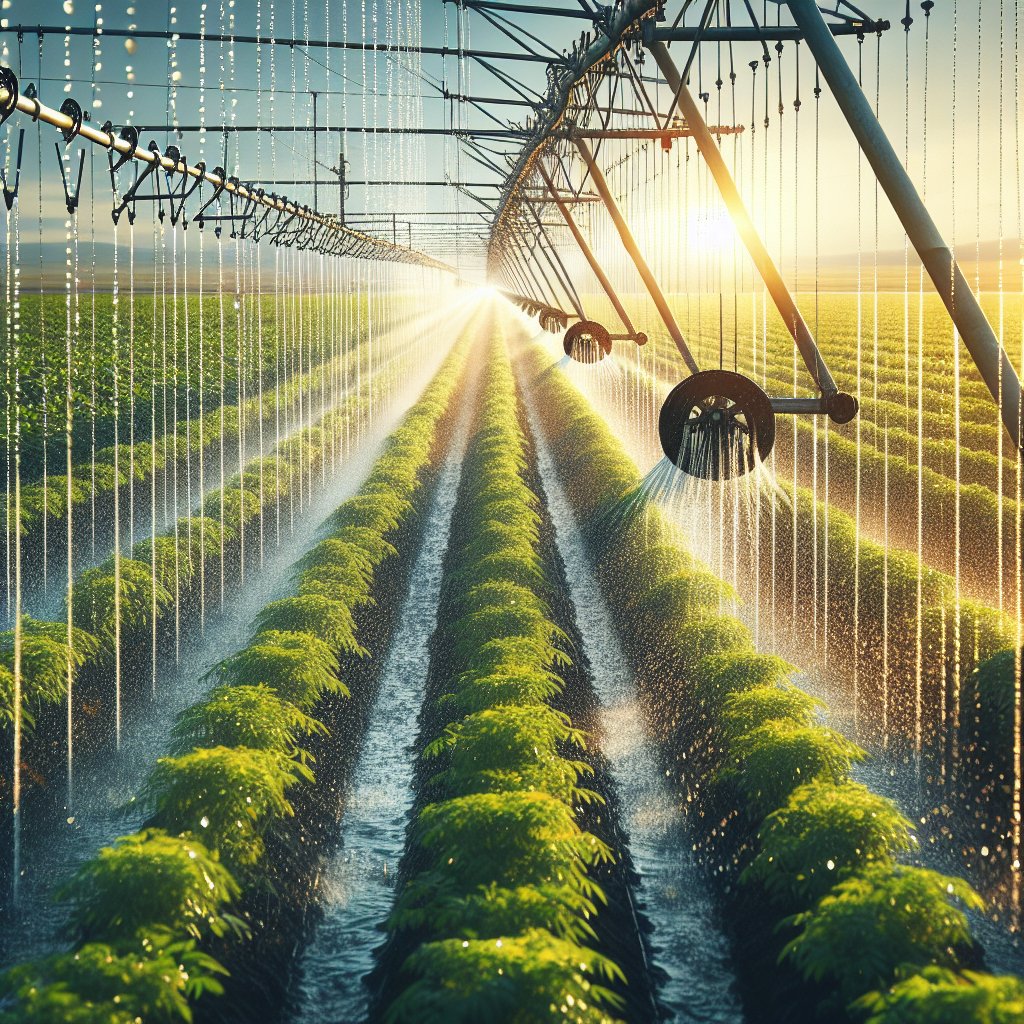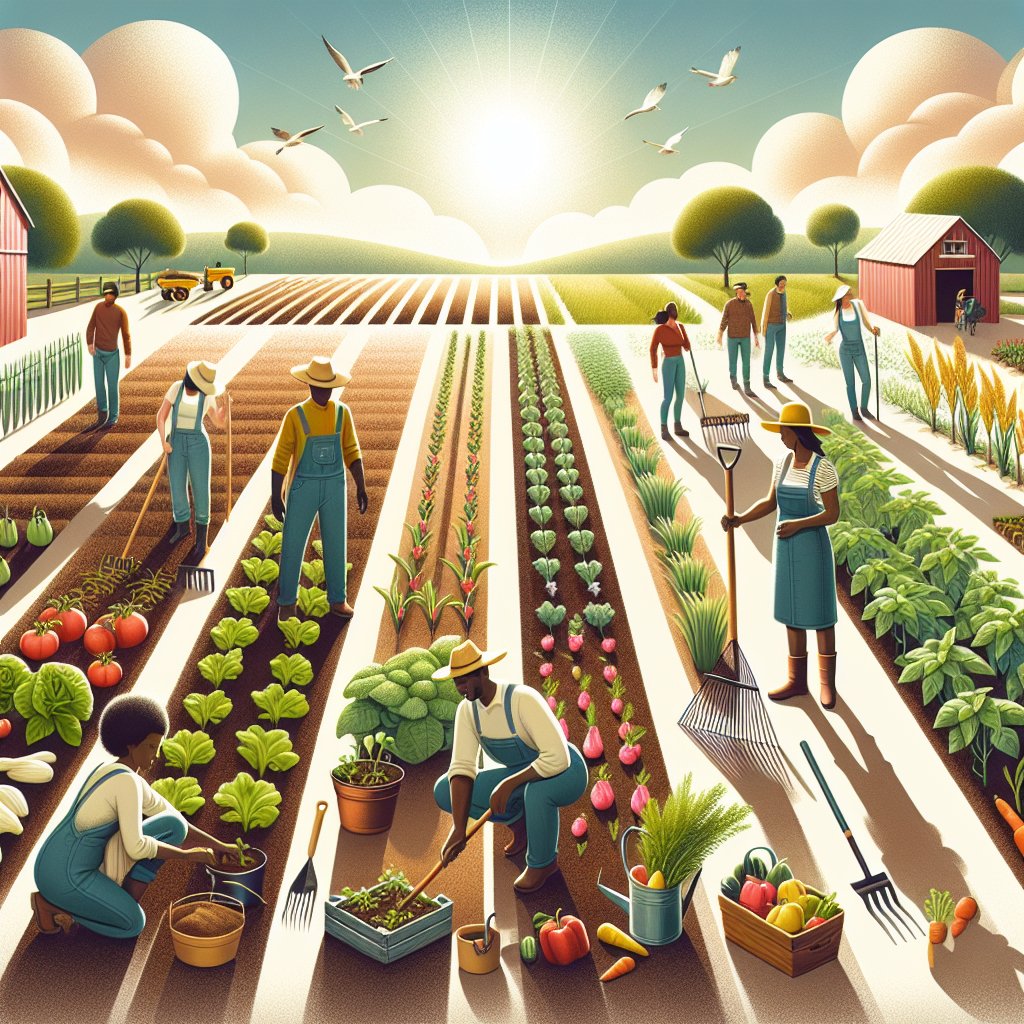
Drip irrigation techniques have emerged as a revolutionary method to save water and boost crop growth, offering a sustainable solution to the challenges faced by modern agriculture. As water scarcity becomes an increasingly pressing issue worldwide, the need for efficient irrigation systems is more critical than ever. Drip irrigation, with its precision and efficiency, provides a promising alternative to traditional irrigation methods, ensuring that crops receive the right amount of water directly at their roots.
Understanding Drip Irrigation
Drip irrigation, also known as trickle irrigation, is a method that delivers water directly to the plant’s root zone in a slow and steady manner. This technique minimizes water wastage by reducing evaporation and runoff, making it an ideal choice for arid and semi-arid regions. The system consists of a network of valves, pipes, tubing, and emitters that distribute water in a controlled manner, ensuring that each plant receives the necessary moisture for optimal growth.
One of the key advantages of drip irrigation is its ability to provide water directly to the root zone, which not only conserves water but also enhances nutrient uptake. By delivering water precisely where it is needed, drip irrigation reduces the risk of overwatering and soil erosion, promoting healthier plant growth and higher yields. Additionally, this method allows for the efficient application of fertilizers, as nutrients can be delivered directly to the roots along with the water.
Components of a Drip Irrigation System
A typical drip irrigation system comprises several essential components, each playing a crucial role in its overall functionality. These components include:
- Water Source: The starting point of any irrigation system, the water source can be a well, pond, reservoir, or municipal supply. It is essential to ensure that the water is clean and free from debris to prevent clogging of the system.
- Pump: In cases where the water source is not at a higher elevation, a pump is used to provide the necessary pressure to distribute water throughout the system.
- Filters: Filters are crucial for removing particles and debris from the water, preventing clogging of the emitters and ensuring the smooth operation of the system.
- Mainline and Sub-mainline Pipes: These pipes transport water from the source to the laterals, which are smaller pipes that distribute water to the emitters.
- Emitters: Emitters are devices that release water at a controlled rate directly to the plant’s root zone. They come in various types, including pressure-compensating, non-pressure-compensating, and adjustable emitters, each suited for different applications.
- Valves: Valves control the flow of water within the system, allowing for precise regulation and scheduling of irrigation.
- Pressure Regulators: These devices ensure that the water pressure remains consistent throughout the system, preventing damage to the components and ensuring uniform water distribution.
Benefits of Drip Irrigation
Drip irrigation offers numerous benefits that make it an attractive option for farmers and agriculturalists seeking to optimize water usage and enhance crop productivity. Some of the key advantages include:
Water Conservation
One of the most significant benefits of drip irrigation is its ability to conserve water. By delivering water directly to the root zone, this method minimizes evaporation and runoff, reducing water usage by up to 50% compared to traditional irrigation methods. This is particularly important in regions facing water scarcity, where efficient water management is crucial for sustainable agriculture.
Improved Crop Yields
Drip irrigation promotes healthier plant growth by providing consistent moisture levels and reducing water stress. This leads to improved crop yields and higher quality produce. Additionally, the precise application of water and nutrients enhances root development and nutrient uptake, further boosting plant growth and productivity.
Reduced Labor and Energy Costs
Automated drip irrigation systems require less labor and energy compared to traditional methods, as they can be easily scheduled and monitored. This reduces the need for manual intervention, allowing farmers to focus on other essential tasks. Moreover, the efficient use of water and nutrients reduces the overall input costs, making drip irrigation a cost-effective solution for farmers.
Environmental Benefits
By minimizing water wastage and reducing the need for chemical fertilizers, drip irrigation contributes to environmental sustainability. The precise application of water and nutrients reduces the risk of leaching and runoff, protecting water bodies from contamination and preserving soil health. Additionally, the reduced energy consumption associated with drip irrigation systems lowers the carbon footprint of agricultural operations.
Challenges and Considerations
While drip irrigation offers numerous benefits, there are also challenges and considerations that must be addressed to ensure its successful implementation. These include:
Initial Investment Costs
The installation of a drip irrigation system can be costly, particularly for large-scale operations. The initial investment includes the cost of components, such as pipes, emitters, and pumps, as well as the labor required for installation. However, the long-term savings in water and input costs often offset the initial expenses, making it a worthwhile investment for many farmers.
Maintenance and Management
Drip irrigation systems require regular maintenance to ensure their efficient operation. This includes checking for clogs, leaks, and other issues that may affect water distribution. Proper management and scheduling of irrigation are also essential to maximize the benefits of the system and prevent overwatering or underwatering of crops.
Water Quality
The quality of water used in drip irrigation systems is crucial, as impurities and debris can clog emitters and affect the system’s performance. It is essential to use clean water and install appropriate filters to prevent clogging and ensure the smooth operation of the system.
Conclusion
Drip irrigation techniques offer a sustainable and efficient solution to the challenges of modern agriculture, providing a means to conserve water and boost crop growth. By delivering water directly to the root zone, this method minimizes wastage and enhances nutrient uptake, leading to healthier plants and higher yields. While there are challenges associated with the initial investment and maintenance of drip irrigation systems, the long-term benefits make it a valuable tool for farmers seeking to optimize their water usage and improve agricultural productivity. As water scarcity continues to pose a significant threat to global food security, the adoption of drip irrigation techniques will play a crucial role in ensuring the sustainability and resilience of agricultural systems worldwide.

